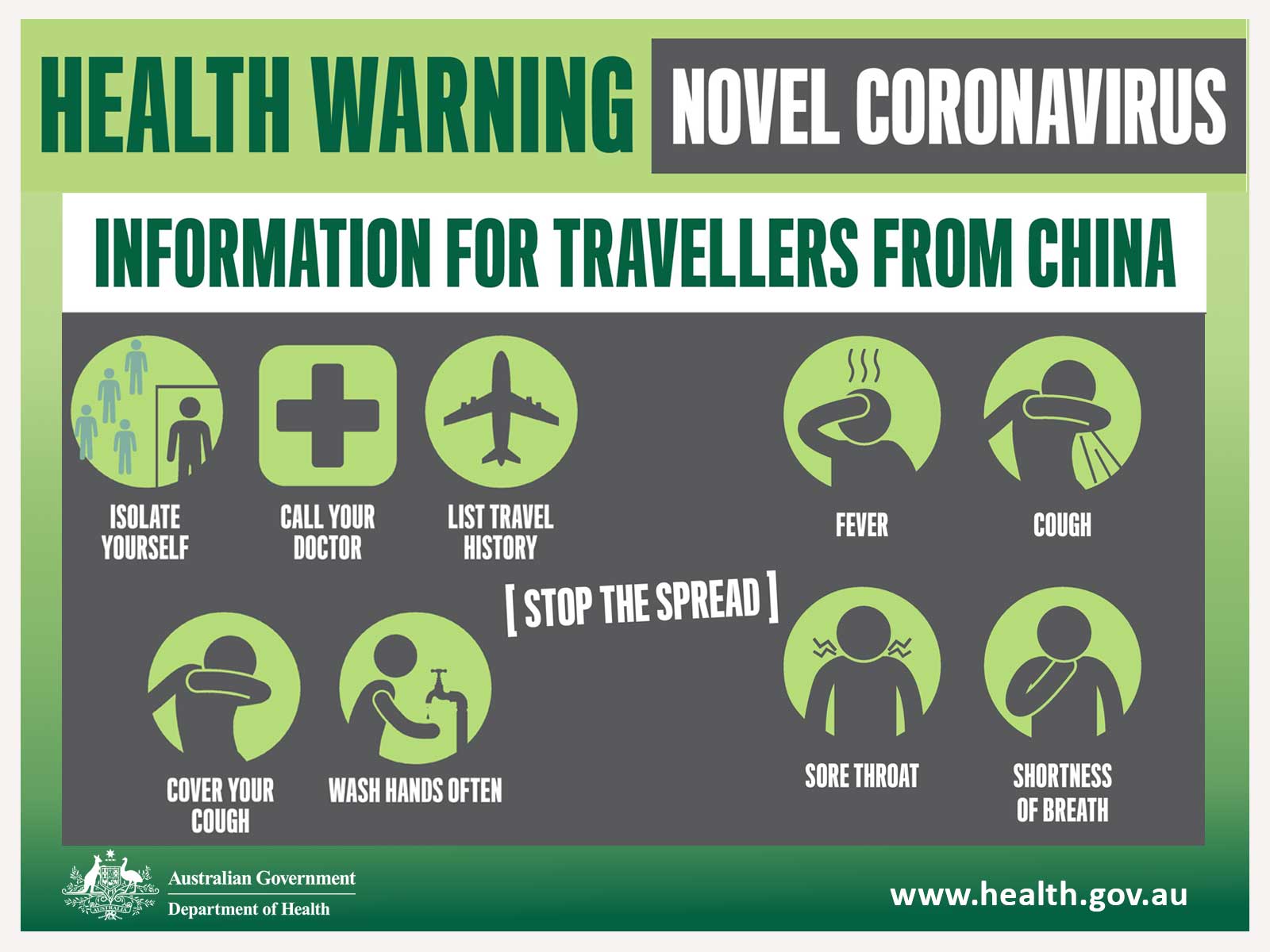Novel coronavirus (2019-nCoV)
What is the issue?
A novel coronavirus (2019-nCoV) outbreak has been identified associated with Hubei Province, China. As of 29 January 2020, health authorities in China have reported more than 8000 cases and over 170 deaths. Confirmed cases have been identified in mainland China, as well as Hong Kong, Macau, Taiwan, Thailand, Japan, Malaysia, South Korea, Vietnam, Cambodia, Sri Lanka, Singapore, Nepal, France, USA and Canada.
The World Health Organisation declared on 30 January 2020 that the outbreak of 2019-nCoV constitutes a Public Health Emergency of International Concern.
Most confirmed cases have a history of travel to Hubei Province or have links to the Province. There is some evidence of human-to-human transmission outside of Hubei Province.
The 2019 novel coronavirus (2019-nCoV) identified in this outbreak has not previously been identified in people. Coronaviruses are a large and diverse family of viruses that include viruses that are known to cause illness of variable severity in humans, including the common cold, severe acute respiratory syndrome (SARS-CoV) and Middle East Respiratory Syndrome (MERS-CoV). They are also found in animals such as camels and bats.
Novel coronavirus 2019 is now a notifiable condition under the Public Health and Wellbeing Regulations 2019 and is required to be notified by medical practitioners and pathology services as soon as practicable.
Who is at risk?
The situation is evolving rapidly as we find out more about this new virus.
Anyone who has travelled to Hubei Province, mainland China or is a close or casual contact of a confirmed case of the novel coronavirus (2019-nCoV) is at risk of infection. See below and the website for a full case definition.
Anyone person who is unwell and presents with a letter, email or other correspondence from a state or territory public health or communicable disease unit informing them they are a contact should be treated as a suspected case.
Anyone who attended the House of Delight restaurant in Glen Waverley between 1730 and 1900 on 26 January 2020, or who was on Tiger Airways flight TT566 From Melbourne to Gold Coast on 27 January 2020 should contact the department on 1300 651 160.
Symptoms and transmission
Reported symptoms include fever and respiratory symptoms such as cough, shortness of breath and breathing difficulties. Sore throat and headache have also been reported. Recent information on the transmission of the virus suggests that cases may be infectious up to 48 hours before the onset of symptoms.
The following case definitions are now in place in Victoria:
Confirmed case
A person tested for 2019-nCoV at the Victorian Infectious Diseases Reference Laboratory and found to have 2019-nCoV infection.
Suspected case
Both clinical and epidemiological criteria need to be met for a person to be classified as a suspected case.
Clinical criteria:
Acute respiratory infection (shortness of breath or cough or sore throat) with or without fever
AND
Epidemiological criteria:
A history of being in Hubei province, China, including Wuhan City, in the 14 days prior to symptom onset
OR
Close contact within 14 days of symptom onset with any of the following:
- a confirmed or suspected case of 2019-nCoV;
- a healthcare facility in mainland China, Hong Kong or Macau (where limited hospital-associated infections have been reported).
Note: a patient with severe acute respiratory infection (SARI) and a history of travel to any part of China in the 14 days prior to symptom onset, after discussion with the department, may be classified as a suspected case and tested for novel coronavirus. As per the World Health Organization definition SARI is an illness with fever AND cough AND admission to hospital. A casual contact with compatible symptoms, after discussion with the department, may be classified as a suspected case and tested for novel coronavirus.





